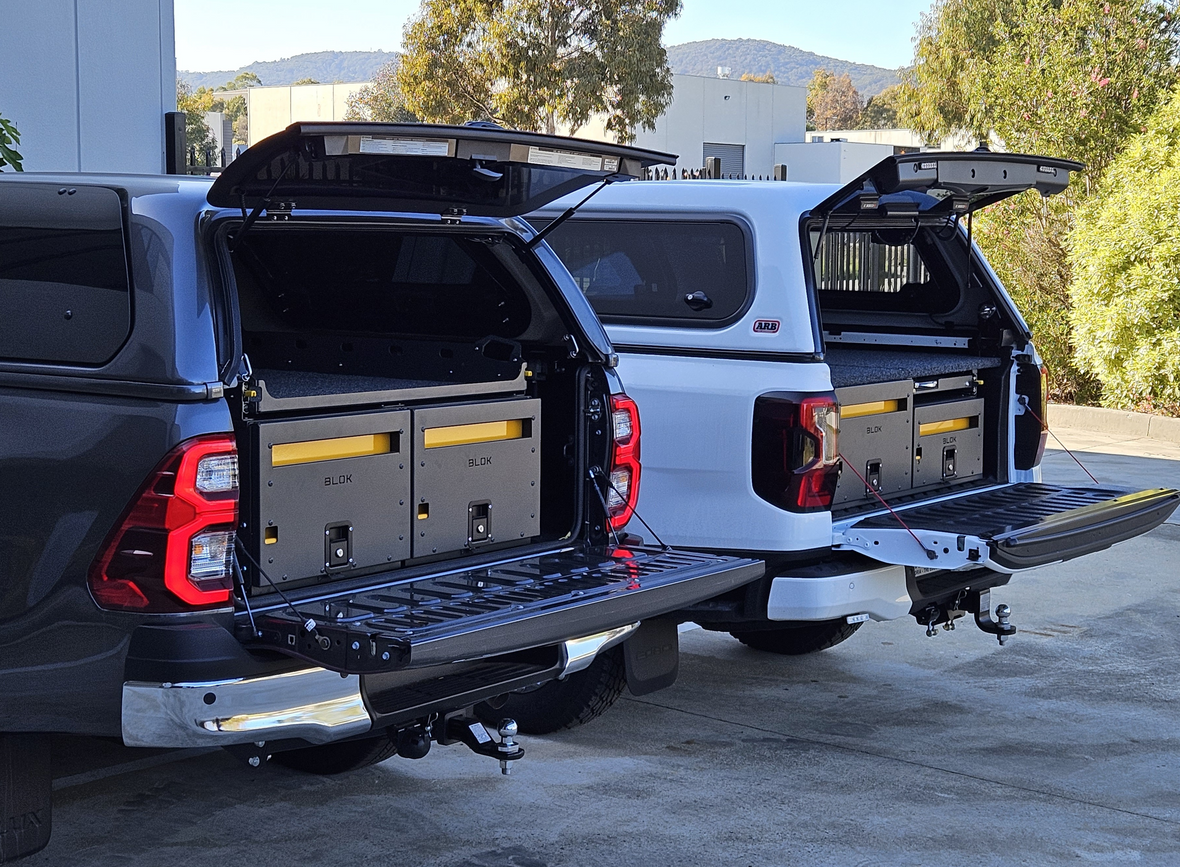
How to Choose the right Ute!
How to Choose the Right Ute as a Tradie: A Comprehensive Guide
As a tradie, your ute is more than just a vehicle; it’s your mobile workshop and essential to your livelihood. Whether you're transporting tools to job sites or navigating rugged terrain, selecting the right ute requires careful consideration of practicality, durability, and functionality. Here’s a detailed guide to help you choose the perfect ute tailored to your trade needs:
1. Evaluate Your Work Requirements
Start by assessing your typical workday and load requirements:
- Payload Capacity: Determine how much weight you regularly carry in tools, equipment, and materials, remember it is important to calculate also the weight of your 'fit-out.'
- Towing Capability: Consider if you frequently tow trailers, machinery, or heavy loads.
2. Tray and Storage Options
Choose between an open tray or a canopy based on your storage and security needs:
- Open Tray: Provides easy access for loading/unloading bulky items like timber, pipes, or construction materials.
- Canopy: Offers weatherproof storage and security for tools and equipment. Look for features like internal lighting, shelving systems, Drawers and lockable compartments.
3. Engine Power and Fuel Efficiency
Balance engine power with fuel efficiency to meet your hauling and driving demands:
- Diesel vs. Petrol: Diesel engines typically offer better torque for towing heavy loads, while petrol engines may be more fuel-efficient for urban driving.
- Fuel Economy: Consider long-term fuel costs and environmental impact. Look for models with modern engine technology that optimize efficiency without compromising performance.
4. Drive Type: 4WD vs. 2WD
Choose a drive type based on your terrain and off-road requirements:
- 4WD (Four-Wheel Drive): Essential for off-road work sites or navigating through rough terrain and inclement weather conditions.
- 2WD (Two-Wheel Drive): Suitable for urban environments or well-maintained roads where 4WD capability isn’t necessary. It often offers better fuel efficiency and lower maintenance costs.
5. Interior Comfort and Features
Consider the comfort and convenience features that enhance your daily work experience:
- Cabin Space: Evaluate seating comfort, interior space for storing personal items and work gear, and overall ergonomic design.
- Technology: Look for modern infotainment systems, connectivity options such as Android Auto and Apple Play (Bluetooth, USB ports), and driver-assistance features (rearview cameras, parking sensors).
6. Safety Features
Prioritize safety with advanced features that protect you and your cargo:
- Safety Ratings: Check crash test ratings and safety features such as ABS (Anti-lock Braking System), traction control, and electronic stability control.
- Airbags: Ensure the ute is equipped with comprehensive airbag systems for maximum occupant protection, it is important to consider the 2nd row of seats if you will be carrying occupants as some utes such as the previous generation Volkswagen Amarok do not have airbags for the rear seats.
7. Budget and Total Cost of Ownership
Set a budget that accounts for purchase price, ongoing maintenance, insurance, and fuel costs:
- Resale Value: Research the resale value and depreciation rates of different models to maximize your investment. This is an often forgotten area to consider but is vitaly important and can potentially mean savings of thousands of dollars.
- Maintenance: Consider service intervals and the availability of spare parts to minimize downtime and maintenance expenses.
8. Test Drive and Research
Take potential utes for a test drive to assess performance, handling, and overall comfort:
- Handling: Evaluate how the vehicle performs under load and on various road surfaces, including off-road conditions if applicable.
- Noise Levels: Pay attention to cabin noise levels and overall driving experience during the test drive.
9. Feedback and Recommendations
Seek feedback from other tradies or industry professionals who use similar vehicles. Their experiences and recommendations can provide valuable insights into real-world performance and reliability.
Conclusion
Choosing the right ute as a tradie involves thorough research and consideration of your specific work requirements, terrain challenges, and budget constraints. By focusing on payload capacity, towing capability, durability, and comfort features tailored to your daily tasks, you can select a ute that enhances your productivity, efficiency, and overall satisfaction on the job. Remember, the right ute isn’t just a vehicle—it’s a crucial tool that supports your professional success and reliability in the field.


